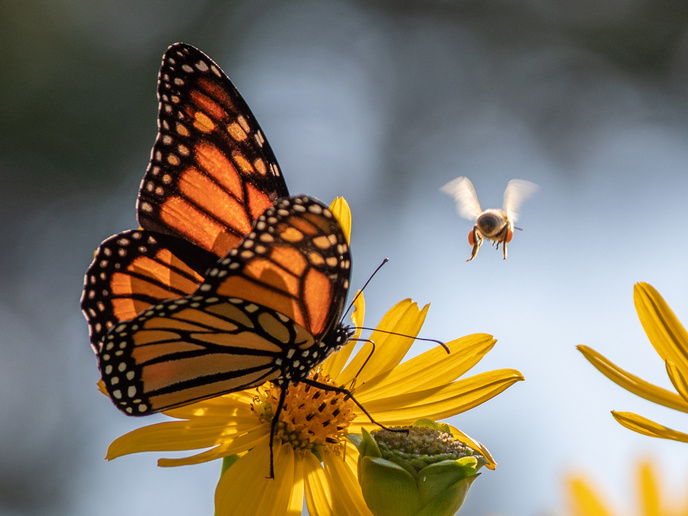Open access to wild pollinator research
Research into bees, butterflies and other pollinating insects is vitally important. It shows us how to safeguard these pollinators and their valuable contribution to the ecosystem and our economy. It can also help guide public and private initiatives striving to stop and reverse biodiversity loss, which is why the EU has been actively investing in such projects over the past decade. To help make these research results more visible, the EU-funded Safeguard(opens in new window) project has released an open-access collection(opens in new window) in the ‘Research Ideas and Outcomes’ (RIO) journal. “The open-access collection of the project in the RIO journal will not only increase the discoverability, visibility, and recognition of the research outcomes, but also set a comfortable digital environment for knowledge exchange, collaboration, sharing, and re-use of research,” reports a recent news release(opens in new window) posted on the ‘EurekAlert!’ website. “The collection in RIO will ensure that Safeguard outputs remain findable, accessible, interoperable, and reusable beyond the project’s lifetime.” The collection currently hosts 15 published papers from different journals, linked through their metadata. Research topics range from the floral resource overlap between honeybees and wild pollinators(opens in new window) to the potential environmental co-benefits of pollinator conservation(opens in new window). Anyone interested can also find an updated list of around 3 000 European bee and hoverfly species(opens in new window).
A look at Serbia’s pollinators
The most recent addition to the collection is a study(opens in new window) presenting new records on Serbia’s wild bee fauna (Hymenoptera: Anthophila). Before we can effectively tackle the problem of Europe’s declining insect pollinators, we need to bridge the information gaps on species spatial distribution, diversity and abundance on the continent. The study is a step in this direction, given that Serbia is one of Europe’s understudied areas. As part of their research, the team monitored bees at 54 sites across the country. The two methods used – transect walks and pan traps – led to the discovery of 312 bee species. Based on the results, 25 of these species had never been recorded in Serbia before. The researchers also confirmed the presence of 26 species without any available records from the 21st century. Moreover, 79 of the species examined were known only from literature-based data and six of the recorded species are considered threatened. An estimated 67 species (of which 10 were newly recorded) have been assessed as Data Deficient in the European Red List of Bees, which identifies species that are threatened with extinction. The study not only updates Serbia’s list of bee species to 731, but, as the study explains, “also provides additional information about European distribution, required for new assessment at the European level.” Safeguard (Safeguarding European wild pollinators) intends to further expand the collection, establishing it as a “one-stop knowledge hub”(opens in new window) for stakeholders by providing access to a range of reports, protocols, methodologies and research papers. The project ends in 2025. For more information, please see: Safeguard project website(opens in new window)



